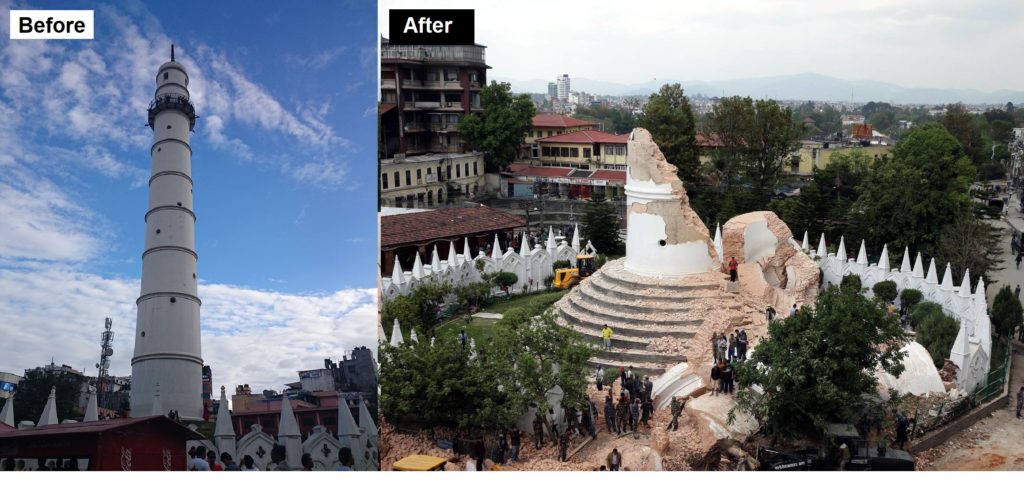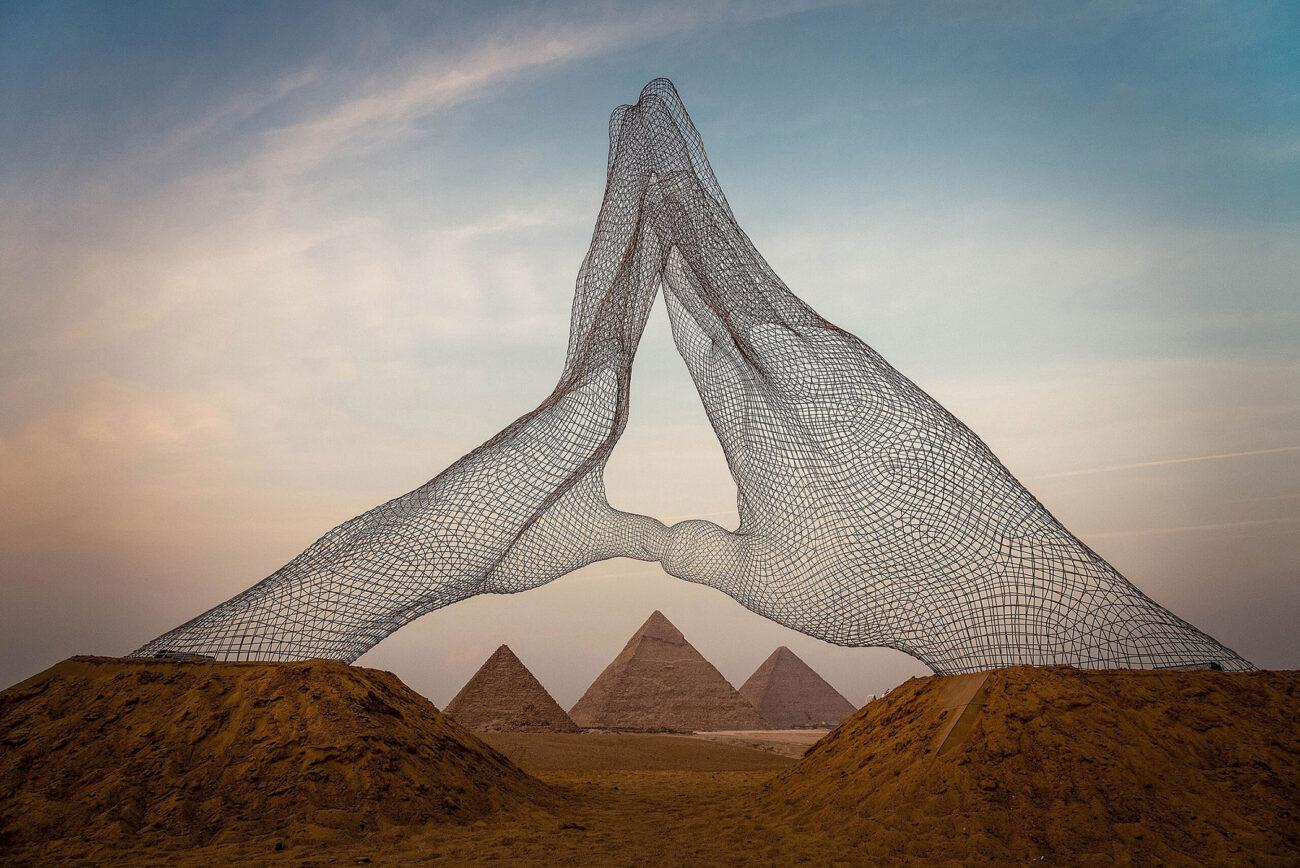2015 Earthquake in Nepal: A Wake-up Call for Monument Documentation
The main goal of Wiki Loves Monuments is to achieve visual documentation of monuments from around the world on Wikipedia. Monument documentation through Wiki Loves Monuments is not only useful for people to get to know cultural heritage in different regions but also it can prove to be one of the few publicly available and freely usable images online of a destroyed or damaged monument.
The devastating earthquake that shook Nepal in 2015 claimed thousands of lives and left thousands more injured, but in addition to human loss it shook many monuments and shattered them to pieces. This was a huge loss for Nepal’s cultural heritage.
3 years, later a huge amount of effort has gone into restoration of damaged documents and there is still a lot to be done. We asked Nirmal Dulal, one of the organizers of WLM in Nepal, about the impact of the 2015 earthquake on monuments and how it changed WLM competition in Nepal.

Dharahar (aka Bhimsen Tower) in Kathmandu before and after the 2015 earthquake. (Photos by Arnsh locus and बिजय पोख्रेल CC BY-SA 4.0)
Tell us about the earthquake and its impact on monuments in Nepal.
The earthquake that happened on April 25, 2015 with a magnitude of 7.8Mw and its strong aftershock on May 12 with a magnitude of 7.3Mw destroyed several monuments. There is a rather long list of partially to fully damaged monuments among which are Kasthamandap in Kathmandu Durbar Square, a UNESCO World Heritage Site, and the Dharahara tower, built in 1832. Also, the earthquake caused the Manakamana Temple in Gorkha, which was previously damaged in an earlier quake, to tilt several more inches. The northern side of Janaki Mandir in Janakpur was damaged. Several temples in Kathmandu valley, including Kasthamandap, Panchtale temple, the top levels of the nine-story Basantapur Durbar, the Dasavatar temple and two dewals located behind the Shiva Parvati temple were demolished by the quake. Some other monuments including the Taleju Bhawani Temple partially collapsed. Jaya Bageshwari Temple in Gaushala and some parts of the Pashupatinath Temple, Swayambhunath, Boudhanath Stupa, Ratna Mandir, inside Rani Pokhari, and Durbar High School have been destroyed.
In Patan, the Char Narayan Mandir, the statue of Yog Narendra Malla, a pati inside Patan Durbar Square, the Taleju Temple, the Hari Shankar, Uma Maheshwar Temple and the Machindranath Temple in Bungamati were destroyed. In Tripureshwor, the Kalmochan Ghat, a temple inspired by Mugol architecture, was destroyed and the nearby Tripura Sundari also suffered significant damage. In Bhaktapur, several monuments, including Changunarayan Temple, the Phasi Deva temple, the Chardham temple and the 17th century Vatsala Durga Temple were fully or partially destroyed. Several of the churches in the Kathmandu valley were also damaged.
Was there any special activity after the earthquake by WLM Nepal? Did the local team ask people to go back and take photos of monuments again?
Right around the time that the earthquake happened, we were preparing for the 2015 version of Wiki Loves Earth. All of a sudden, we found ourselves engaged in earthquake relief programs. We did ask people to take photos of destroyed monuments just after the earthquake and 100s of photographs were uploaded during the time and the news of this activity was covered by dozens of national and international news portals and reports. In 2016, we successfully organized the WLM competition which by far has seen the highest number of photographs uploaded in WLM Nepal.
How did the earthquake change WLM competitions in Nepal in the following year? Did you change anything in the contest after earthquake?
Thankfully while the earthquake was devastating and damaging to a significant portion of Nepal’s heritage, it did not destroy or even affect everything. In fact, 5 monumental sites out of 8 UNESCO World Heritage sites in Nepal were not affected by the earthquake. The logistics of the competition didn’t change much in the following year but there was huge spike in the number of participants and the number of photos received during the competition. We went from a little over 1500 photos in 2015 to more than 8500 submissions in 2016. In some sense, the earthquake shook our competition too, in a good way. Perhaps, the loss and damage to so much heritage was a wake-up call to underline the importance of documenting our heritage and a reminder that no matter how old a monument is and how many disasters it has withstood there could still be something stronger, more devastating, more fatal so it’s important to document whatever we have.
What is the status of damaged monuments? How is the restoration activity going?
Most of the damaged monuments are now under restoration process. The restoration is undergoing by Department of Archaeology of Nepal, with support from UNESCO and various other concerned parties. It’s been going well but these kinds of activities take time. So far, 30% of the monuments are fully restored and the rest are in the process of being restored.
In there anything else you’d like to share with us?
It makes me proud to say that because of the WLM photo contest we were able to store almost 17000 photos of monuments in Nepal before and after the earthquake on the open database of Wikimedia Commons.
We did lose something precious in this earthquake but on a positive note, it gave us a chance to appreciate the importance of the documentation process. It has also made us more mindful of our resources. For example, unlike our early years we are avoiding the use of paper promotion with the theme of: 1 ream of paper = 6% of a tree and 5.4kg CO2 in the atmosphere, 3 sheets of A4 Paper = 1 liter of water. To acquire a couple of thousands of pictures we can’t afford sacrificing hundreds of trees to waste. So, we have started a new innovative campaign to achieve our goals by:
- Rigorous Emailing
- Using Social Media
- Tell a friend campaign
- Central notice across Wikimedia projects; to be directed to our site etc.
- Media coverage
And besides that this year (In WLM 2017) we introduced a Photoride session to cover as many monumental sites as possible with a team of professional photographers. As a result, we traveled more than 80km uptown and visited 4 major locations and more than 161 monument sites in Nepal. It’s been fun and we are looking forward to the 2018 edition of the competition and many more photos of Nepal’s monuments to come.
Special thanks to Nirmal for answering our questions and also for the great work he is doing along with the other members of the WLM team in Nepal.
